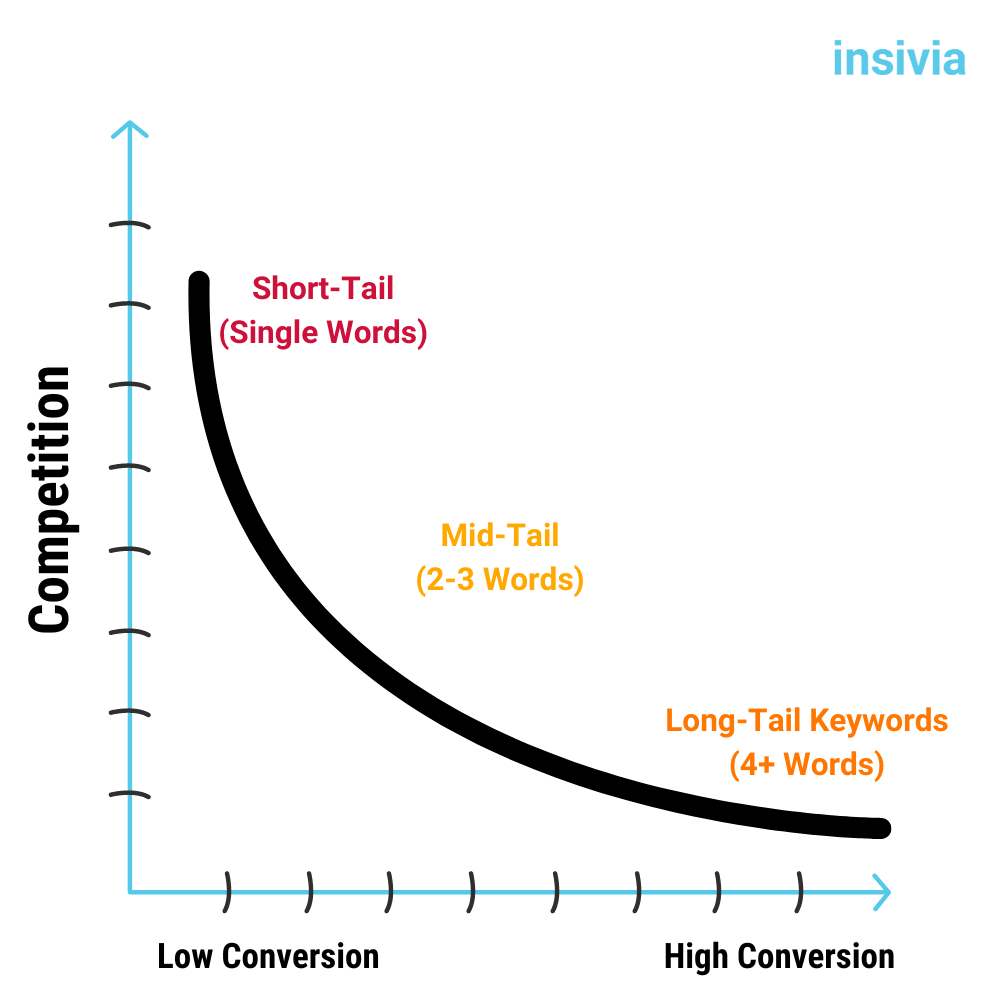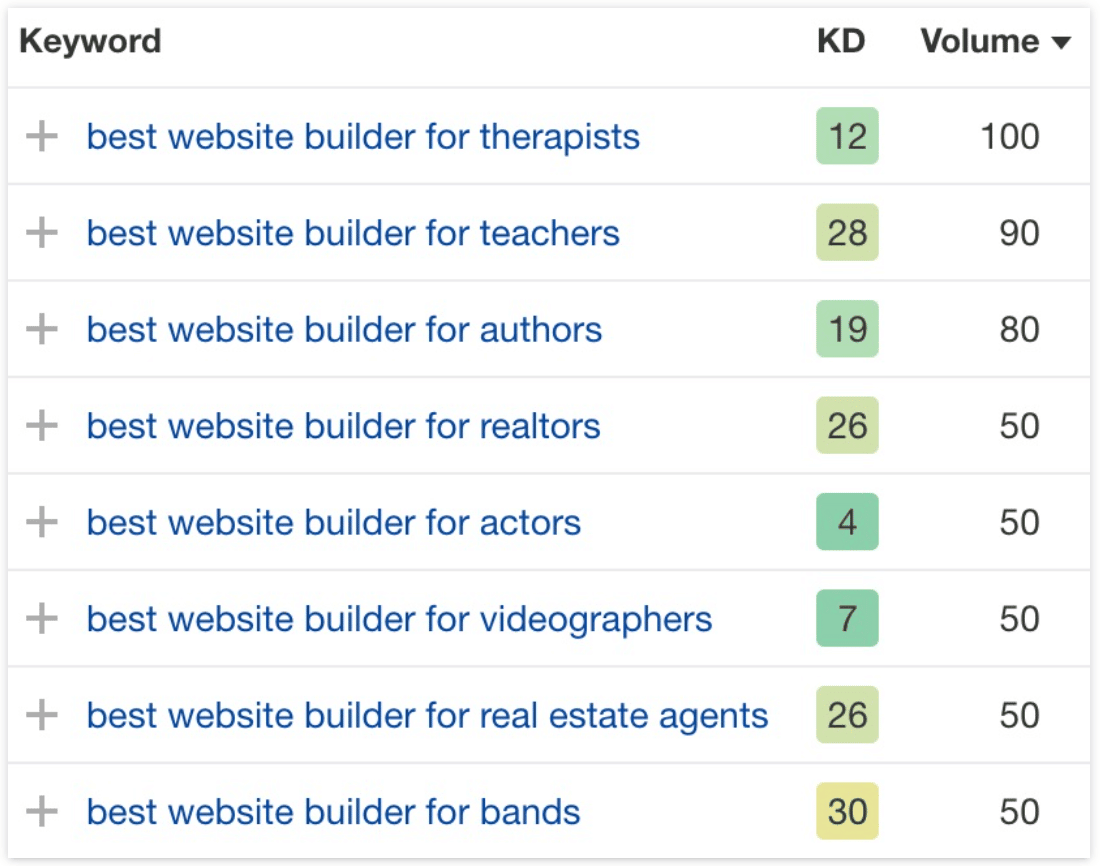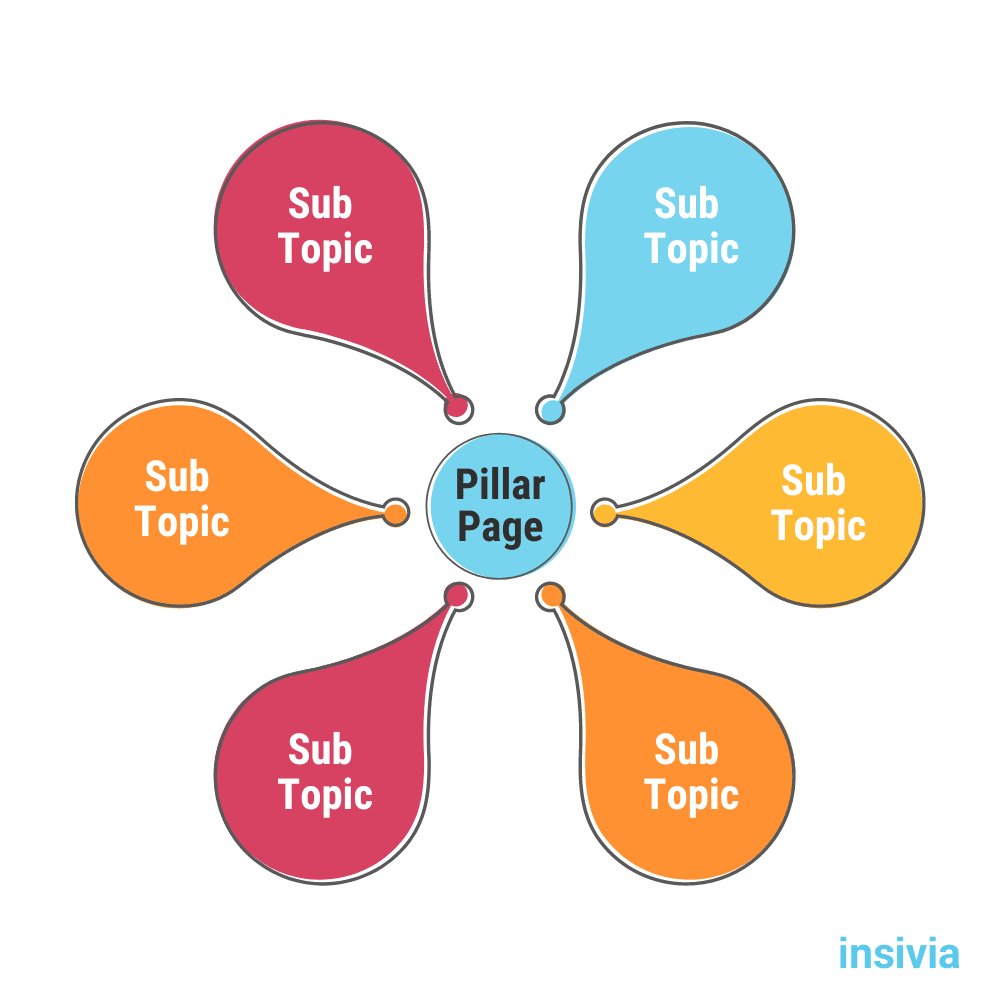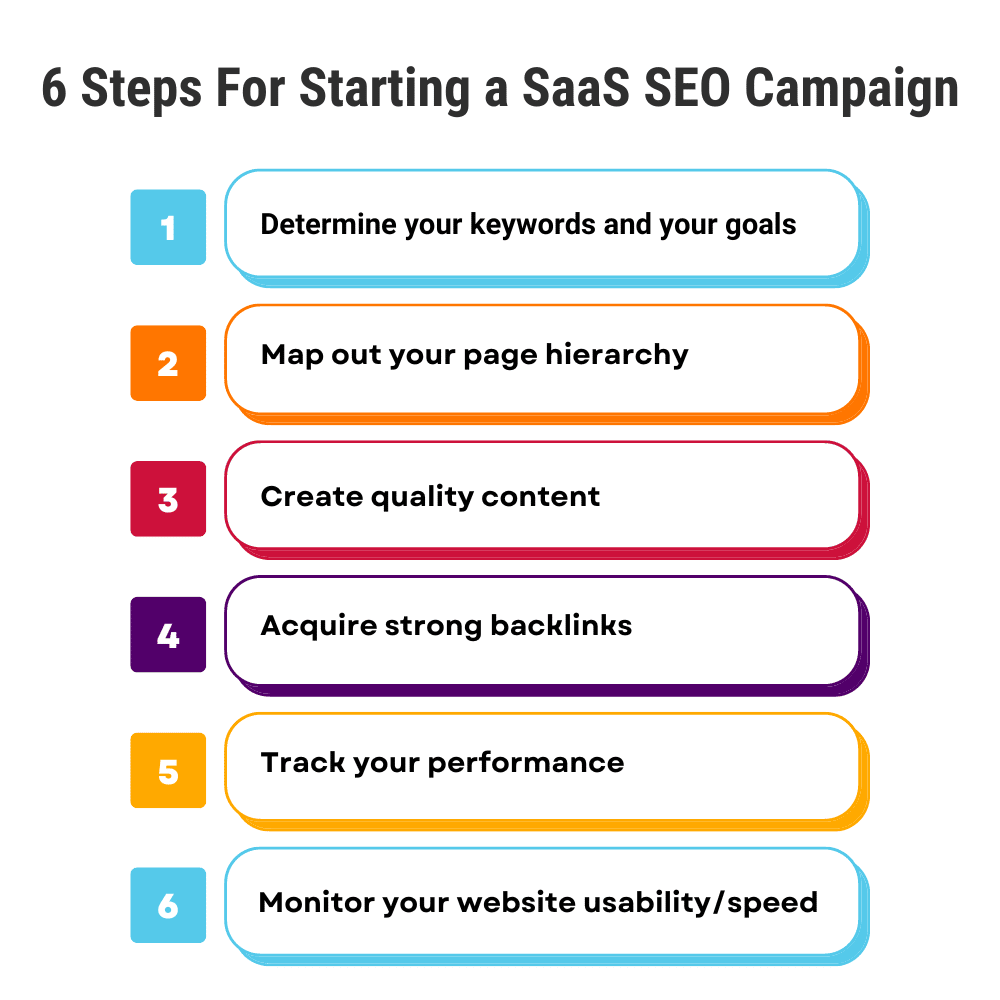Search Engine Optimization can be an extremely beneficial tactic for increasing your organic traffic and increasing your conversion rate. But, these efforts need to be strategic and thought through logically in order to yield results. Luckily, there are straightforward steps for executing a strong SEO strategy and a plethora of SEO tools at your disposal.
What is a SaaS SEO Campaign?
Before you jump into your content strategy for SEO, you need to understand exactly what it is and its purpose.
A SaaS SEO campaign is a set of activities, tactics, and strategies centered around the optimization of your website for search engines. It involves researching and understanding the needs of potential customers searching for your product or service, and adjusting your content accordingly to capture their attention in organic search results. SEO campaigns involve both technical elements (e.g., page speed, server settings) as well as creative elements (keywords, metadata).
By optimizing each of these elements together, you can create an SEO strategy that amplifies the visibility of your website within search engine rankings. Ultimately, this will result in increased organic traffic and conversions from those seeking what you have to offer. Let’s jump into the first steps for starting off strong with your SaaS SEO strategy.
Step 1: Determine Your Keywords & Goals
Look at where you’re currently ranking
If you already have content on your website, it’s very important to research and analyze where you currently stand in Google for relevant keyword ranking. For your SEO campaign to be successful, it’s important to select the right keywords to target. Start by brainstorming terms that describe your business, products/services offered, and location if applicable. You can then use keyword research tools such as Google Keyword Planner and others to assess search volume for each term and narrow down the best ones for you to use in your SEO strategy. Once you have established which keywords you want to target, it’s time to implement them into your existing content assets such as blogs and product descriptions, etc. This process involves understanding where the optimal places are throughout the copy for the keywords you have identified, along with making sure each page has well-researched title tags, meta descriptions, and heading tags associated with it that accurately describe its subject matter so visitors quickly understand what they will find upon landing on that page of the site.
Analyze Your Competitors’ Valuable Keywords
Conducting competitor analysis is a crucial element in deciphering which keywords you should use for your website. This isn’t so that you can copy their content word for word, but it’s to help you better understand how you should position yourself in the particular industry. By getting a grasp on what SEO tactics and keywords your competition is using, you can develop a list of valuable SEO keywords for yourself. Figure out what competitor keywords have a low keyword difficulty (KD) and a high search volume. You don’t want to choose a keyword that is too competitive to the point that it’s extremely difficult to land on the first page. Once you have conducted this analysis, you can move forward with developing an SEO strategy that takes into account not only your own keyword selection but also how to position yourself to outrank your competitors. This includes looking at their SEO-related efforts (e.g., backlinks) as well as the content optimization strategies they are employing. As a result of understanding what SEO tactics are being used by other companies in the same space, you can adjust yours accordingly so that it is more effective than theirs.
Conduct an SEO Audit
Another strategy you can utilize is conducting an SEO audit of what you currently have on your website. This is so you can update outdated content, fix any broken links, and get rid of duplicate content. Auditing your content can help you figure out new angles in order for you to rank higher on Google. Once you’ve gone through your website in-depth, you can start implementing changes and see how they affect your ranking over time. You want to make it a habit to do this SEO audit frequently so you can ensure your website is always in top shape.
Focus on Long-Tail Keywords

Long-tail keywords help you narrow down from broad terms to more specific, targeted phrases. This makes your chosen keywords less competitive since your trying to rank for a niche market. Implementing long-tail keywords into your keyword strategy also helps you align more with visitor search queries. Typically, searchers ask particular questions or need a certain product. That’s what’s called their search intent. If they have intentions of purchasing something, those are the target keywords you want to aim for in order to drive sales.
Ahrefs shares some great examples of long-tail keywords:

Notice that the keyword difficulty (KD) is low but the search volume is still relatively high. This is the happy medium you need to shoot for when deciding on target keywords to utilize. In fact, 70% of all searches performed online consist of long-tail keywords. The keywords you choose should be natural to the search terms people typically use. Don’t make it so obscure that searchers will rarely type in those words. A majority of long-tail keywords show the search intent of those people looking up specific parameters that will meet their needs. This is a huge opportunity to hone in on the relevant long-tail keywords that fit your SaaS product and use them to your advantage!
Step 2: Map Out Your Page Hierarchy
Page hierarchy is not only important for SEO, but it’s important for the user experience as well. A good SaaS SEO strategy should consider how each page is interconnected and how it affects overall SEO performance. When mapping out a page hierarchy, it’s important to think about the structure of your website from an SEO perspective. You need to ensure that all of the pages on your website are properly connected so that search engine crawlers can index them accurately. This includes making sure there is an appropriate internal link structure, as well as ensuring that no pages have any broken links or other SEO issues. An easy way to give yourself the ability to internally link to other pages on your website is by creating pillar pages. These are specific landing pages that revolve around a niche topic relevant to your industry/product. Pillar pages act as a hub for SEO opportunities, enabling you to link other important content from your website. Internal linking is important since this helps you rank higher in Google. These links act as a map and structure for Google to index your pages. 
Step 3: Create Quality Content
Creating new pages such as blog articles or additional service/product descriptions is another great way of optimizing a website for both users and search engine bots alike. This increases your visibility in search engines due to the keyword relevance.
Quality content provides value to your niche audience while also improving your overall SEO performance. Quality SEO content should be written with the users in mind. Creating strong, relevant content also helps Google understand your website’s purpose. Don’t make content for content’s sake. This is where quality over quantity comes into play.
SEO doesn’t end with your website. You want to have a strong online presence as well. Utilizing various channels to gain more traffic is a great way to reach a larger amount of your target audience. However, make sure the channels you’re using are places that your niche consumer lives on. Depending on what your product is that could be primarily LinkedIn, YouTube,
Be versatile with the types of high-quality content you’re putting out there. Blog posts are great to start out with, but you can also create videos, ebooks, newsletters, and so much more. This kind of content marketing strategy will grab even more visitors from various channels.
Step 4: Acquire Strong Backlinks
Reaching out to other websites allows one to build links between two similar web pages. This produces relevant traffic that is actively seeking industry information. This improves organic traffic simultaneously.
Acquiring strong backlinks leans heavily on making connections. In order to make those connections, you have to be able to offer the other person something of value. You can do a guest blog post for another’s website, or provide them with useful information for an already published article they have. This provides them with new valuable content to add to their post.
Not only do backlinks send a signal to Google, but it brings in more referral traffic to your website as well. This is why you want to ensure that you’re acquiring strong and relevant backlinks. You don’t want your domain authority score to drop because you’re attached to some unhealthy websites. There are many press/reporter resources that you can utilize to acquire these links. HARO is one of our favorites. To monitor your current referral traffic, you can use tools like Google Search Console that give you a breakdown of where that particular traffic is coming from.
Step 5: Track Your Performance
Once you start to make changes to your pieces of content and your website pages, you want to make sure you’re keeping track of the outcome. SEO campaigns don’t happen overnight and you need to keep an eye on your website performance to make sure the strategies you’re implementing are working.
In order to monitor your SEO performance and make sure that your efforts produce results, set goals with specific time frames and track how close you come to achieving them. This will enable you to evaluate the effectiveness of each SEO tactic used, as well as identify areas that need improvement. Track your progress on a regular basis in order to adjust tactics and make changes when needed. Doing this will help ensure that your SEO efforts are paying off and bringing in more organic traffic from search engines.
Monitoring your SEO performance allows you to experiment with different approaches to figure out what strategy sticks. Not every SaaS product is the same and neither should your marketing strategy be either. Figure out what works for you and what’s also competitive within your market. Finding an effective SEO strategy will be extremely rewarding once you reach the finish line.
There are an array of SEO tools that can track your website performance. SEMrush and Google Analytics are two popular ones that give you a lot of useful information in order to conduct a successful SEO campaign.
Step 6: Monitor Your Website Usability
Along with creating killer content, you want to ensure that your website loads quickly and the interface is easy to navigate. Without either of those attributes, visitors are likely to bounce and look for a better website.
Here are a few easy ways to improve your website load time:
- Choose a strong hosting platform: WordPress is a popular and trustworthy website creator. This helps you seamlessly create your website on a secure platform.
- Compress your images: Reducing the file size of your images is a sure way to improve your website speed. Plus, it only takes a few minutes to do this.
- Refrain from using redirects: Redirects on your website can increase the loading time it takes for the visitor to go from one page to another, which makes it more likely that they’ll bounce from your website in frustration.
- Don’t use too many plugins: Simple is always better, don’t overdo it with the number of plugins you use on your website as this will naturally do harm to your load speed.
- Make sure your design is mobile friendly: In fact, according to Google, As page load time goes from one second to 10 seconds, the probability of a mobile site visitor bouncing increases by 123%. This is why it’s crucial that the elements on your website are friendly for mobile users.
These are only a few ways you can decrease your website loading time, but if you execute these changes, you will significantly lower your bounce rate.
Key Takeaways

Keeping all of these key steps in mind, you should be starting off on the right foot when it comes to your SaaS SEO strategy. It all comes down to what works well for your company and product. Narrowing down the audience you want to aim for can be a great first step. Then, you can figure out the list of keywords that match what that target persona is searching for. Your on-page SEO is not the only attribute you want to hone in on. Backlinks, page hierarchy, and your online presence can significantly impact your SEO performance. Organic search traffic can be incredibly rewarding, but don’t let other areas of your business go untouched. Make sure you’re using all available resources/channels to reach the right consumers. SaaS SEO can be tricky at times, but with these first steps, you can positively affect your search ranking and gain more visibility for your business. It’s also the most effective, free avenue you can utilize to gain relevant traffic and more conversions.
Written by: Tony Zayas, Chief Revenue Officer
In my role as Chief Revenue Officer at Insivia, I am at the forefront of driving transformation and results for SaaS and technology companies. I lead strategic marketing and business development initiatives, helping businesses overcome plateaus and achieve significant growth. My journey has led me to collaborate with leading businesses and apply my knowledge to revolutionize industries.
